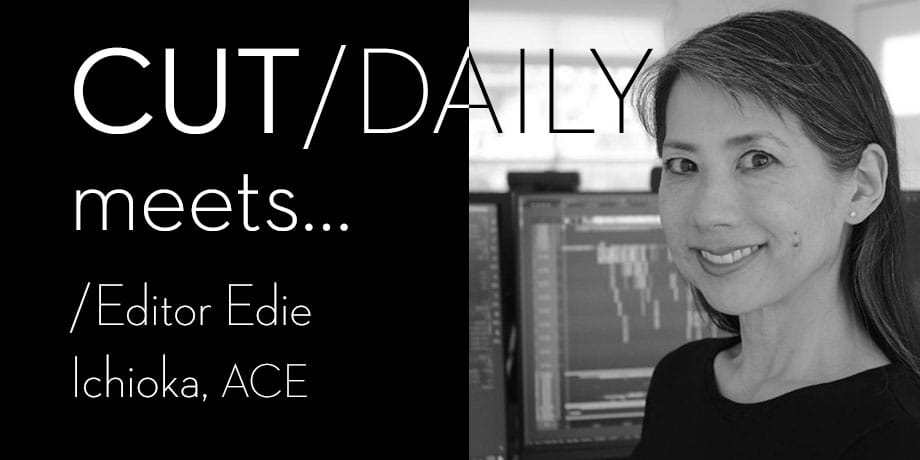#390 - Cut/daily Meets... Editor Edie Ichioka

Over the last 30 plus years, Edie Ichioka, ACE has edited live-action features, television series, documentaries and a fistful of animated feature films, including Toy Story 2, The Boxtrolls, Wonder Park and Over the Moon.
Having also assisted legendary Editor Walter Murch on The English Patient, Godfather 3 and Godfather Trilogy Edie later directed and edited a feature-length documentary distilling his editorial musings in Murch, which is part of the ever-expanding Murch-o-pedia here.
Given that Edie is currently editing the animated feature, Thelma The Unicorn, for Netflix I asked her a few bonus questions on the art and craft of animation editing.
Enjoy!
What has working in animation taught you that other types of editing hasn’t?
Editing animation is editing in live action except backwards and in tai chi style.
You start by creating the film before it is shot (rather than being on the receiving end of footage.) Building the story from storyboards and scratch dialogue to create an audio/visual script to work from is essential in the labor-intensive endeavor of animation.
I do anticipate that AI will alter this in the near future so that we will easily be able to create a pre-visualization reel to be used for launching animators (bypassing the boarding step).
There are already examples of animation through AI that need some human intervention to steer the interpretation of the commands towards the desired direction.
It will be interesting to see how quickly we get there and if people regard this as too threatening from our robot overlords.
Being nimble and open to ideas (yes, including AI) is important - you must keep stress testing and improving the story over the years that it takes to complete the movie.
Everyone who touches the movie should plus it (i.e., the actor’s improv line, or the alternate angles suggested by layout etc.). This will lead you down a lot of rabbit holes, but you will also find great ways to add drama, laughs or the unexpected.
(From the outside) Working in animation editorial looks like a longer, slower, more iterative creative process. What are the challenges and benefits of this?
There are several issues presented by the many years that it often takes to create an animated feature.
If your show includes a child actor, their voice tends to change over the course of their record sessions. This may cause you to pitch shift or re-record some of the material. Utilizing an adult who can perform child characters’ voices avoids this issue (and it means that I don’t have to get my annual background clearance documents to be in the record session with a minor).
There are also shifts in executive leadership that can invite new notes that need to be addressed over this long period of time.
What specific skills should someone looking to work in animation post-production develop?
The borders between animation and live action are getting blurrier and blurrier with so many VFX-intensive movies. When you look at non-indie, live-action films, there are very few shots that do not involve some form of digital visual intervention.
Animation post-production requires a stronger organizational staff to wrangle all of the elements arriving from story, previs, layout, animation, lighting, etc.
There must be an attention to detail exercised so that if media imported and then omitted from the edit years ago is now needed, it can be easily accessed.
This mindset is important - you can’t hack through with a machete and leave the debris behind you. Instead, you must leave a trail of mouse-proof breadcrumbs.
